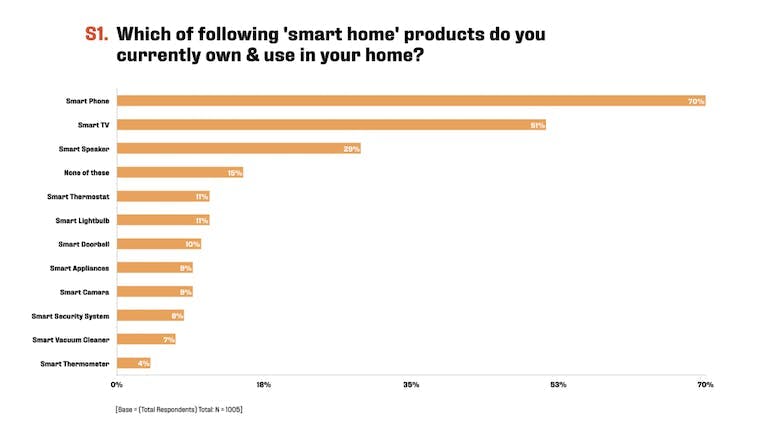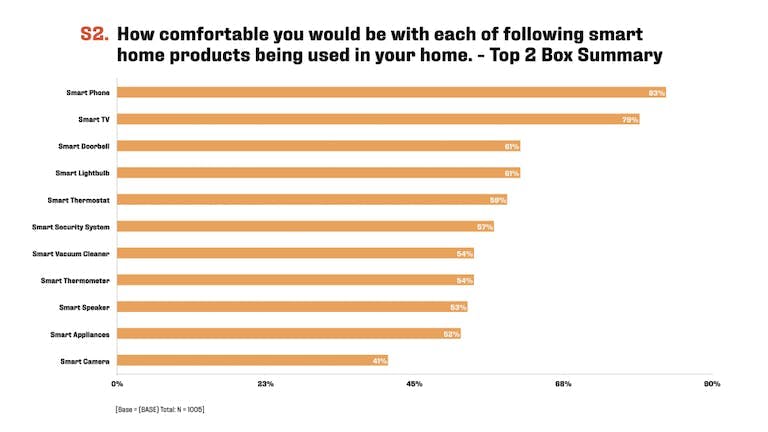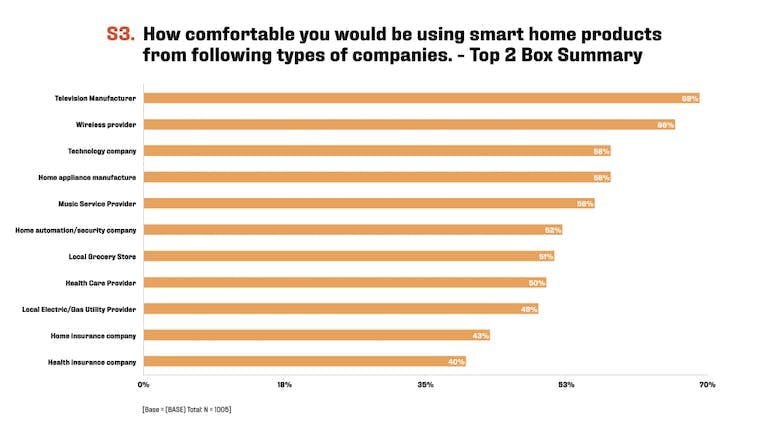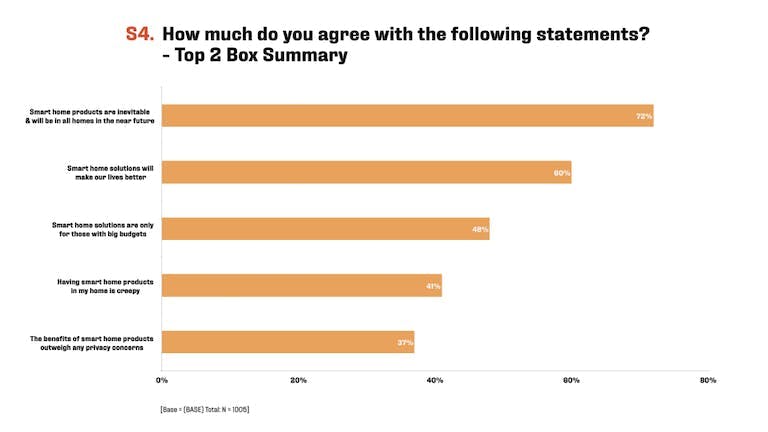Growing up, I was fascinated with the future of smart home living. Promised on TV shows like Star Trek or The Jetsons, who didn’t want a Rosie the Robot taking care of all the household duties? And I wasn’t alone.
Early in my career, I spoke with countless Americans to understand how the Internet and wireless connectivity was helping to solve many of their home challenges. Yet, one concept that continued to surface for many Americans was wanting a ‘personal concierge’ in their home; something akin to Rosie the Robot to wake them in the morning, keep their family calendars, do their shopping, play music, and anticipate their needs.
While the vocabulary was not yet there, what they wanted was a connected home. Fast forward to today.
If you watch TV advertising, you might assume we now all have connected homes. However, this simply isn’t true. The adoption of smart home products is not as widespread as we’re led to believe.
Smart Hesitation
While much has been advertised about smart homes and other utilitarian household electronics becoming smarter, most households seem hesitant to get on board.
In a recent CARAVAN® survey (N=1,005 US adults), we found that the “smartest” products in most American homes are phones (70%), TV’s (51%), and smart speakers (29%).
Additionally, despite massive advertising budgets and incentives from local utilities and governments, the installed base of smart thermostats and smart lightbulbs is only 11%. Security-related products, such as smart security systems, haven’t fared any better, with just 8% of Americans owning a smart security system (e.g. SimpliSafe) and 10% a smart doorbell (e.g. Ring).

Smart Generation
While some Americans seem reluctant to adopt smart technology, there are still many who are. This left us wondering: could this be a generational thing? In our survey, we observed small generational effects with Millennials and, to some extent, Gen X being significantly more likely to own/use smart home products.
This advantage held only for certain products like smart appliances (14% vs 7% for Gen X and Boomers). Millennials were also significantly more likely to own/use 2+ products in the home (69%) vs. Gen X (57%) and Boomers (55%). And, as we might expect, early adopters (first to purchase/use products) reported higher ownership of smart home products.
Smart Trust
With such slight generational disparities, we began questioning comfort levels. Could the consumers who envisioned a ‘Rosie the Robot future’ just not be ready to welcome smart technology into their homes?
We learned that most people are somewhat or completely comfortable with the objects we use every day, like smartphones (83% somewhat or completely comfortable) and smart TVs (79%). People’s comfort with other products, however, was middle of the pack, with comfort scores ranging from 52% to 61%. Meanwhile, products with cameras (e.g. Facebook Portal), as well as more mundane and utilitarian smart home products like thermostats, vacuum cleaners, and lightbulbs generated discomfort for more than 40% of Americans.

Given people’s general discomfort with smart home products being used in the home, we were curious to know how their comfort would vary based on the type of company that offered the products.
We learned that consumers have the most comfort with wireless carriers (66%) and TV manufacturers (69%). Big Tech companies (e.g. Google, Facebook, Amazon) and home appliance manufacturers were tied at 58%.
Which companies engendered the least amount of comfort with consumers? Home insurance companies (43%) and health insurers (40%). In fact, we found that the local grocery stores have more permission to be in a consumer’s home (51% comfortable) than—not just—insurers, but local electric/gas utility companies too.

Finally, we asked consumers about their underlying attitudes about the smart home. Almost 3 out of 4 believe smart home products are inevitable and will be in all homes soon. And nearly 2 out of 3 believe smart home solutions will make their lives better.
Smart Chasm
So, what then is keeping consumers from crossing the smart home “chasm?”? Two of the biggest barriers to the adoption of smart home products are cost and privacy. Almost half of consumers believe that smart home solutions are for people with money, while only 1 in 3 believes the benefits of smart home products outweigh privacy concerns.
Clearly, there is a gap in trust between brands developing smart home products and their consumers. And with data breaches, as well as privacy scares, dominating today’s headlines, it’s no surprise that consumers are hesitant to welcome smart home products into their homes despite perceived inevitability and belief that they will make their lives better.
For brands, this is where opportunity may lie. Filling this gap of distrust could be a massive move for the brand that does it first.

Smart Moves
So, how do brands fill the gap of distrust? How do brands cross the chasm and enter the homes of their consumers? The way we see it, the same principles that apply to house guests also apply to smart tech brands:
1. Remember that you’re a guest in your customers’ home.
2. Ask for permission first before you go wandering around their house and opening the refrigerator door.
3. Leave their home the way it was when you were invited in.
4. Don’t snoop in the medicine cabinet, open the closet doors, or explore anything else without your host’s permission.
5. Do the job you were hired for unless your host asks you to do more.
6. Don’t assume just because you have a relationship with the consumer outside the home that you are welcome inside their home. Be sure to clearly communicate the benefits of your products and respect your consumers’ boundaries.
Let Big Village Power Your Smart Home Insights.
In a world where the smart home is playing an increasingly important role in technology, it is important to assess the right options for consumers to help futureproof products and build the future of innovation. At Big Village, we work to bring customer perspectives to life through strategic consultation and custom research and analytics program. Stay one step ahead of the trends as the smart home ecosystem evolves. Find out more at big-village.com.

